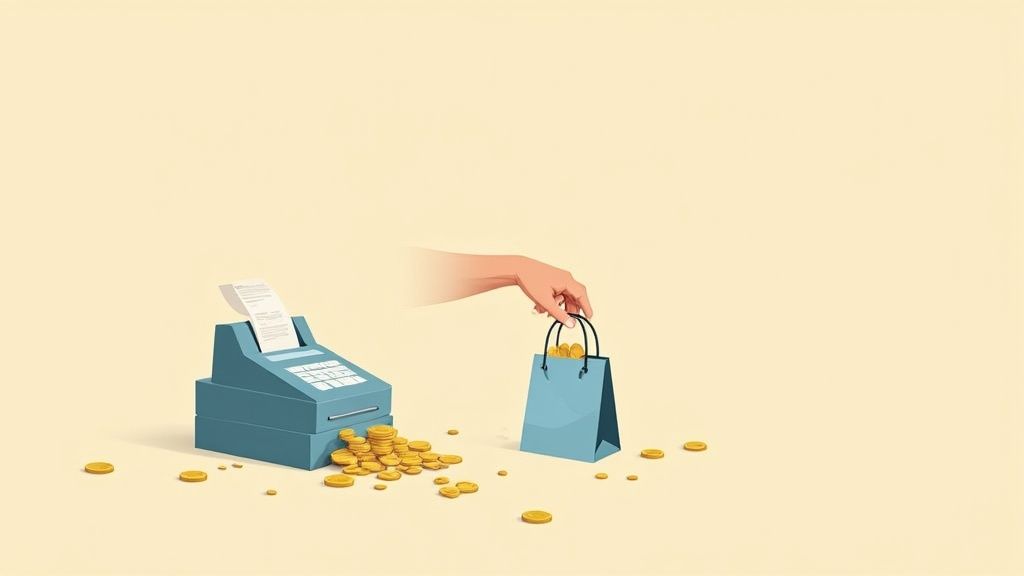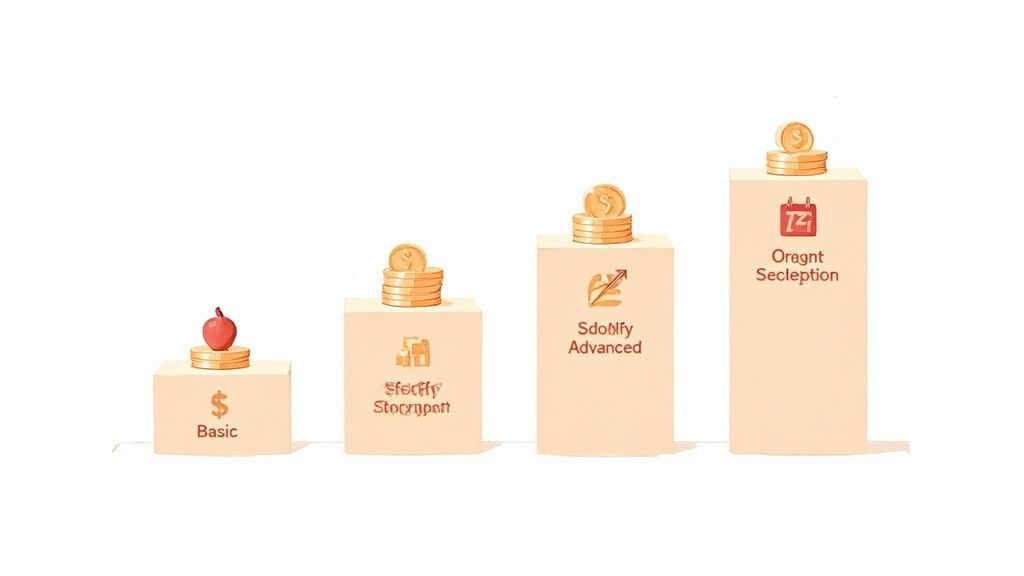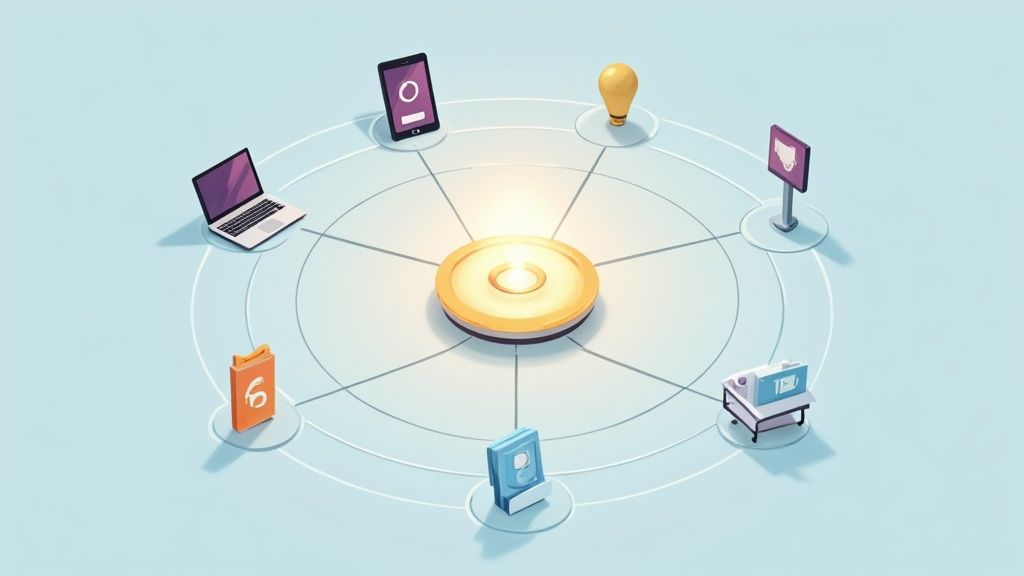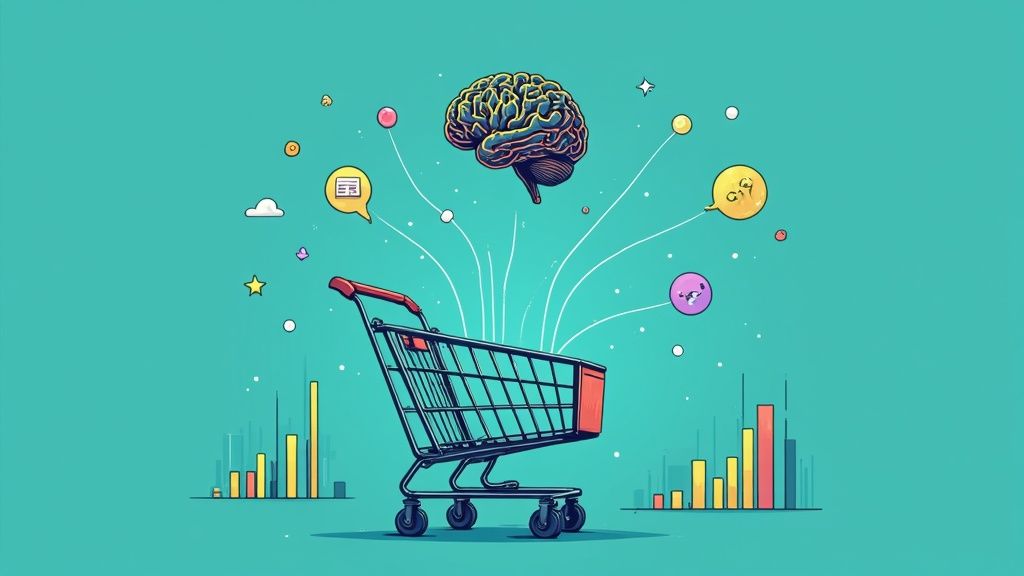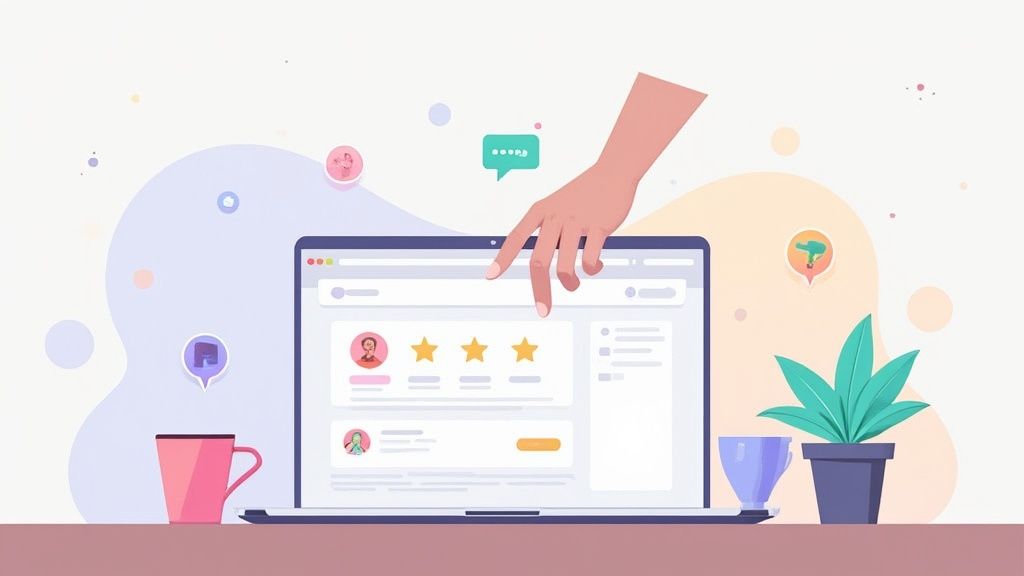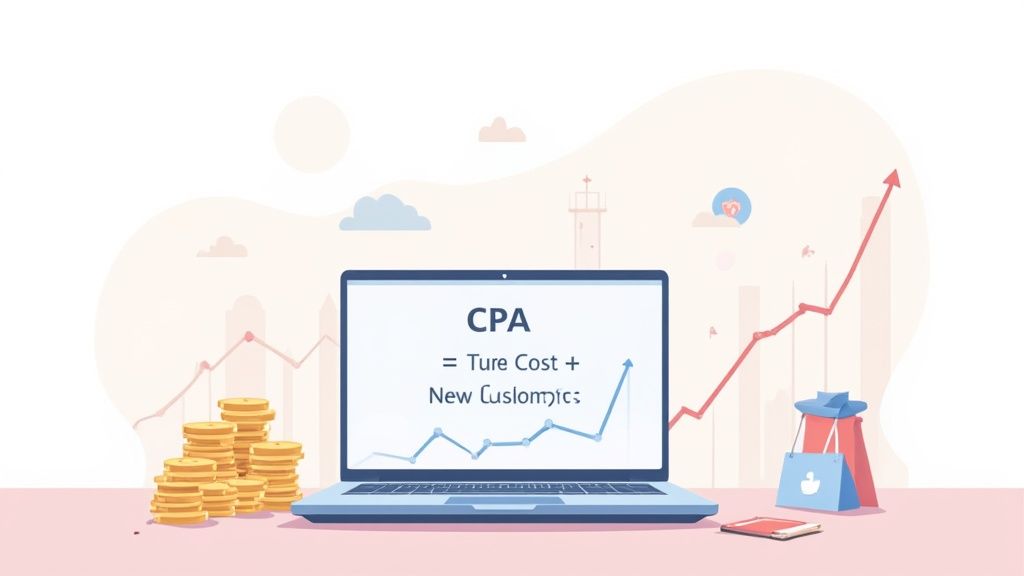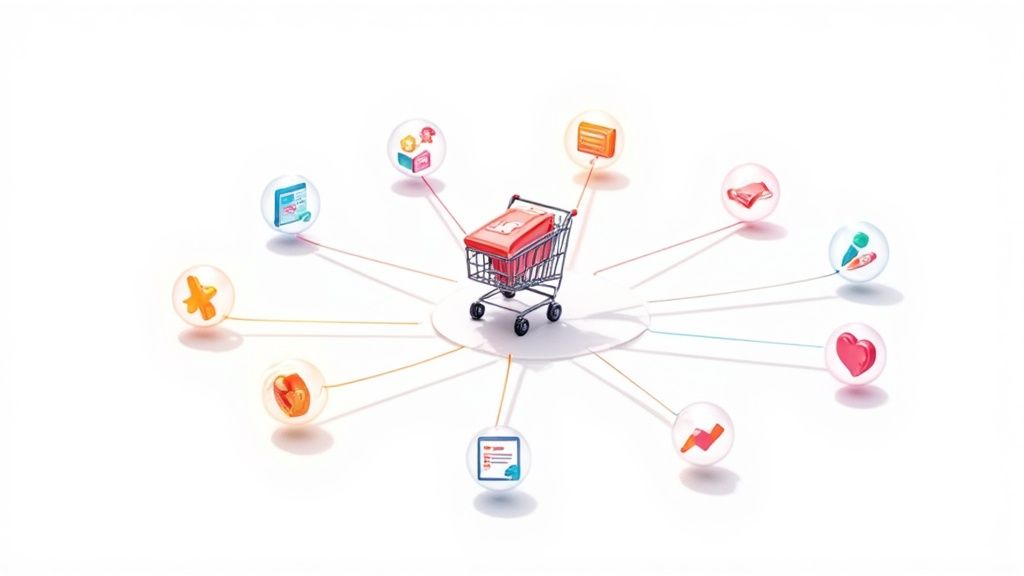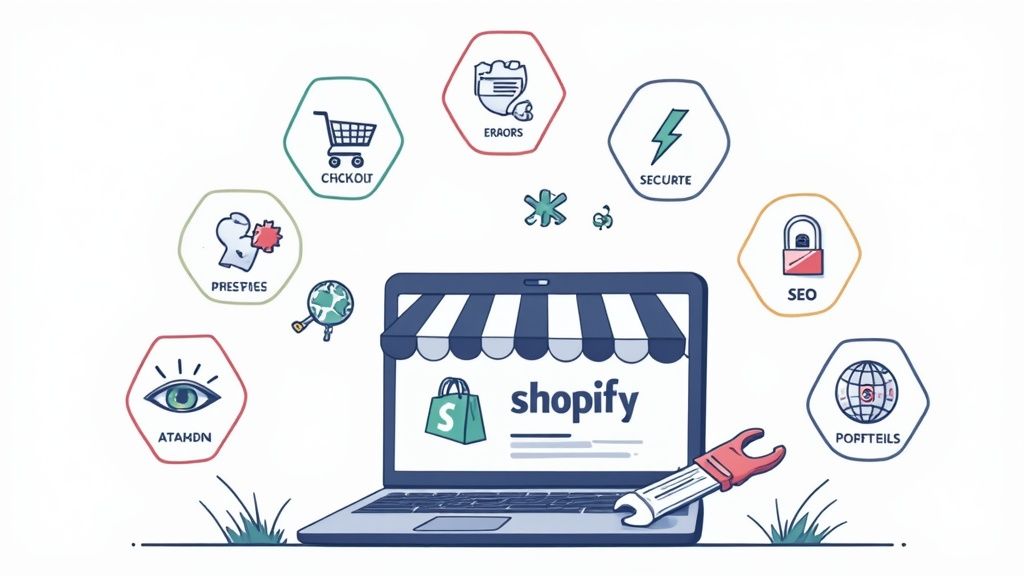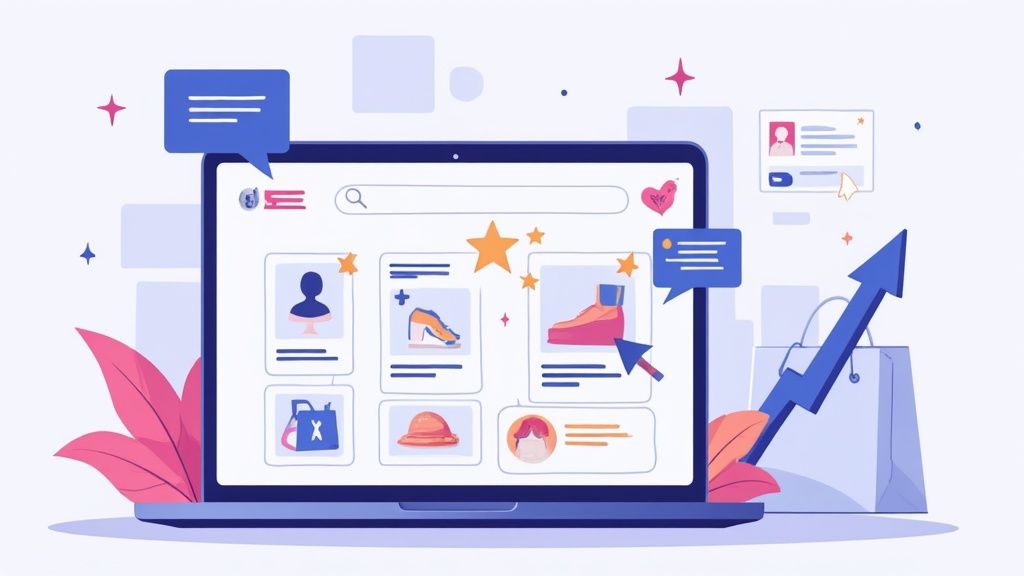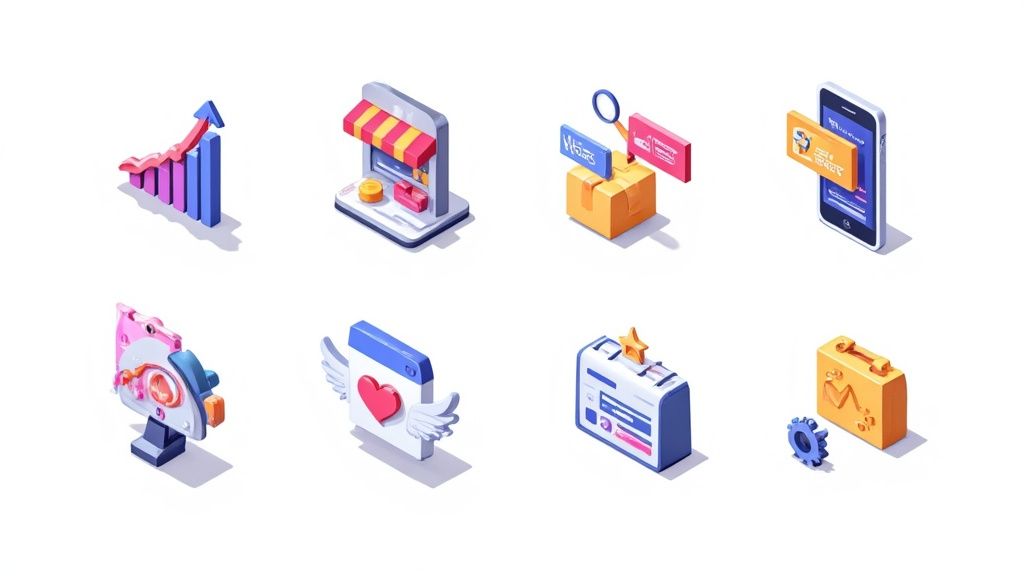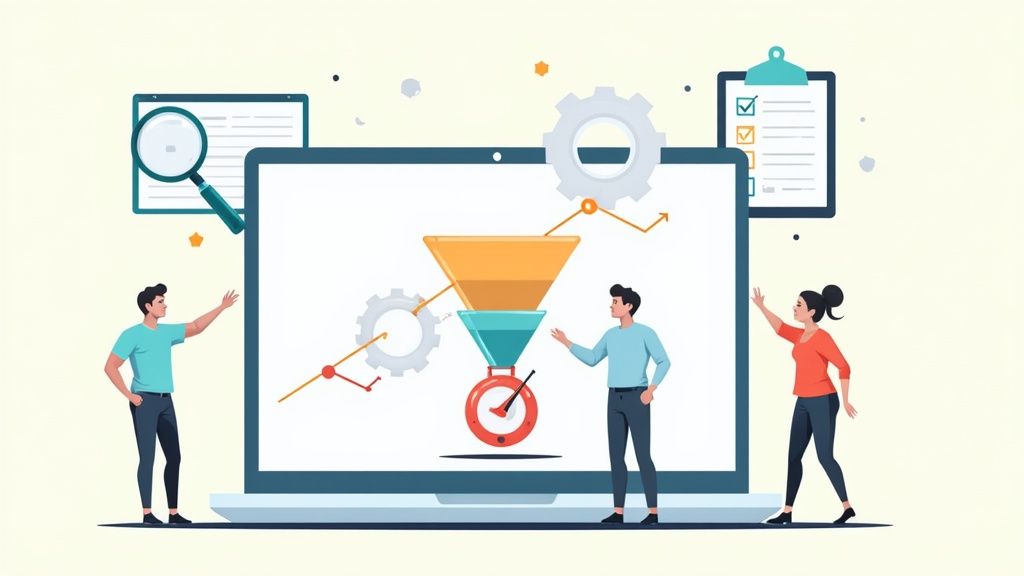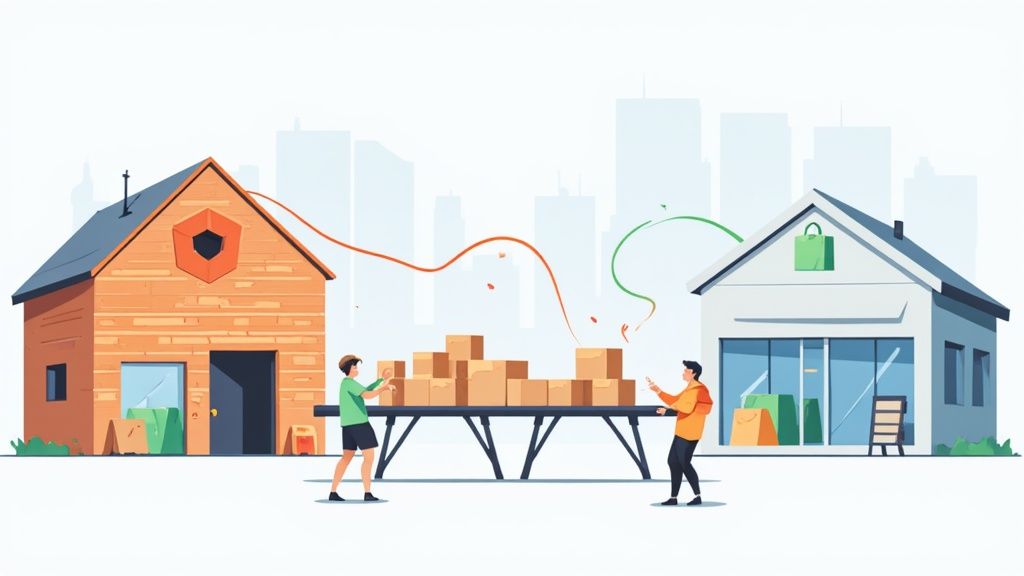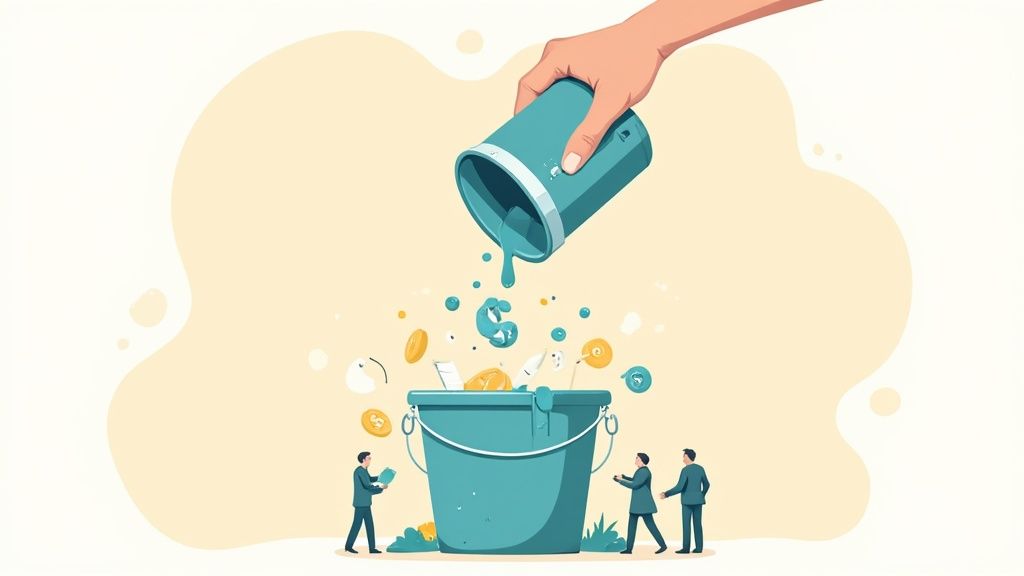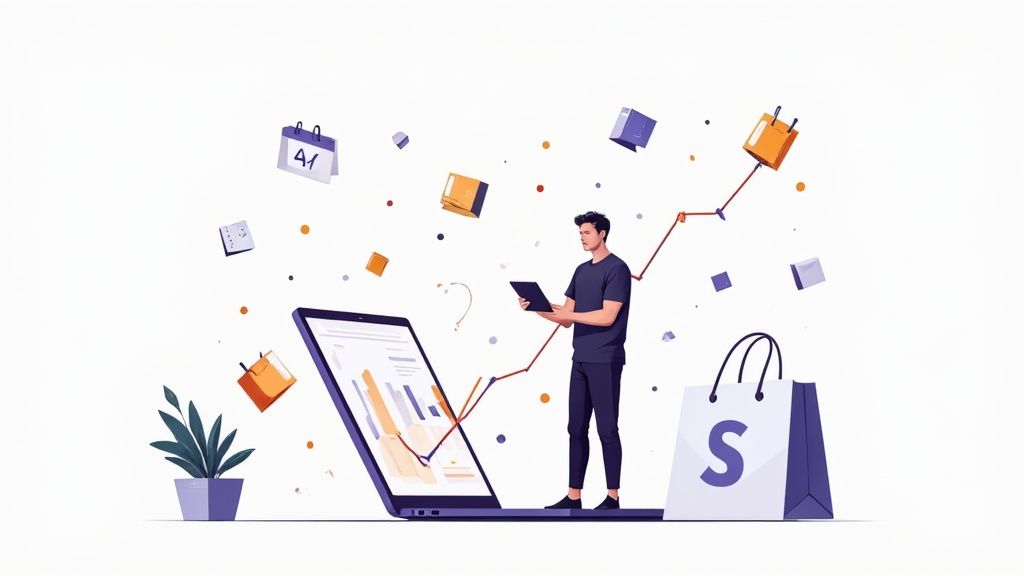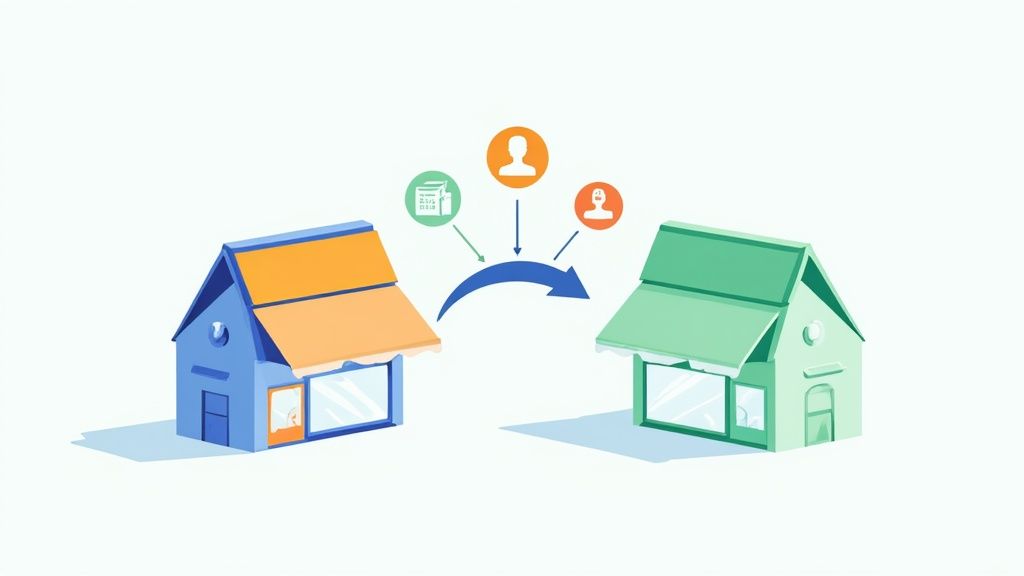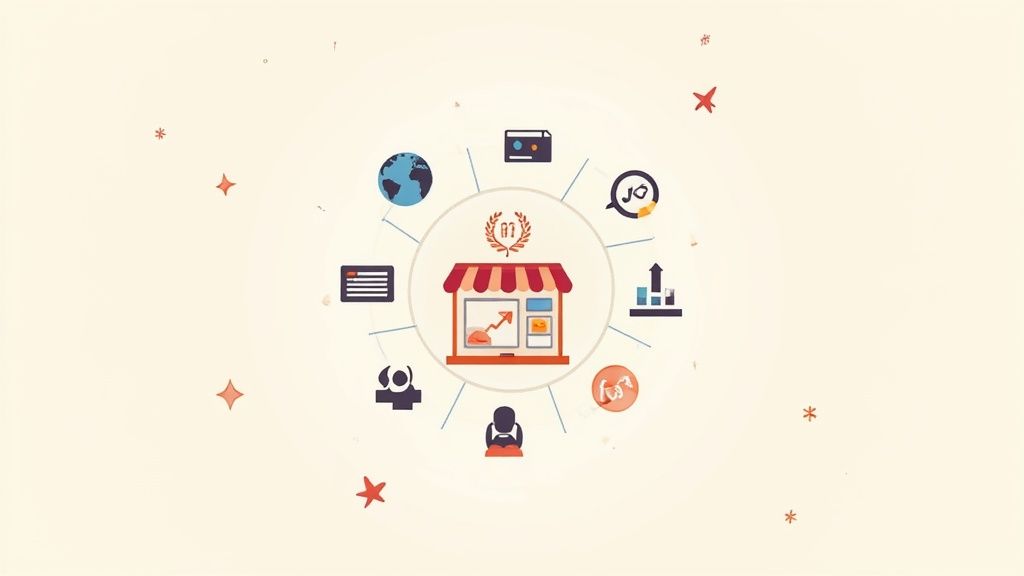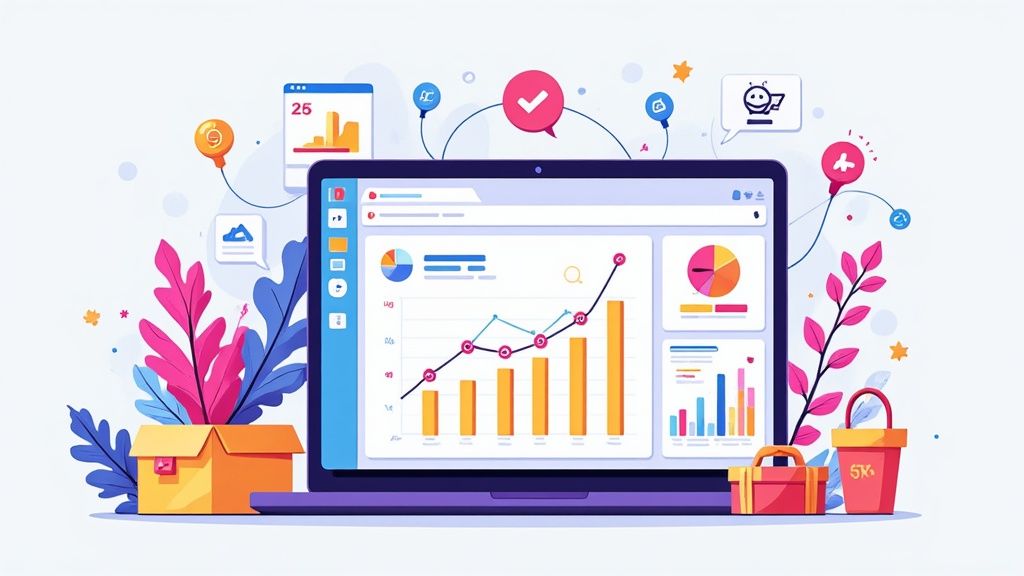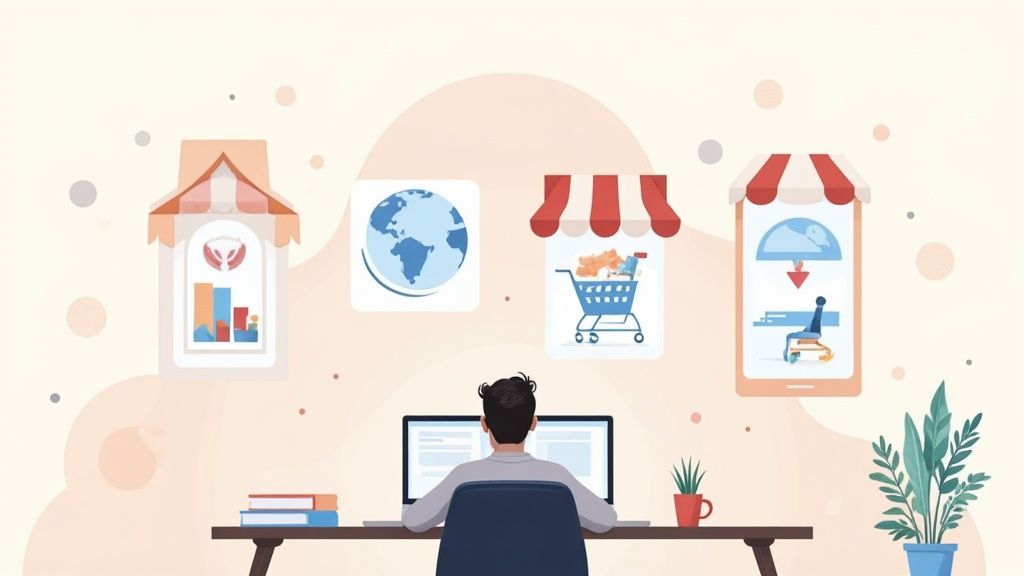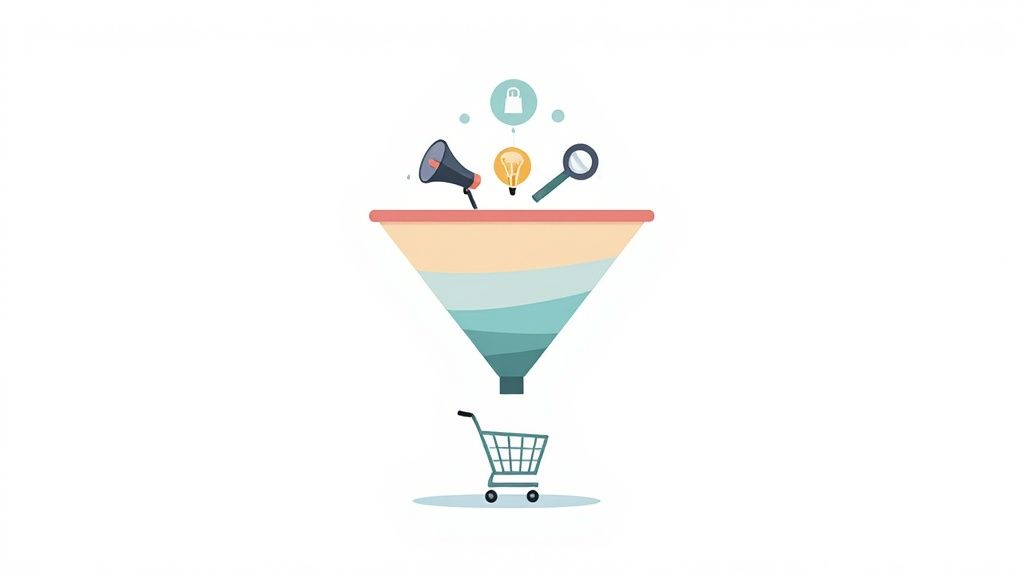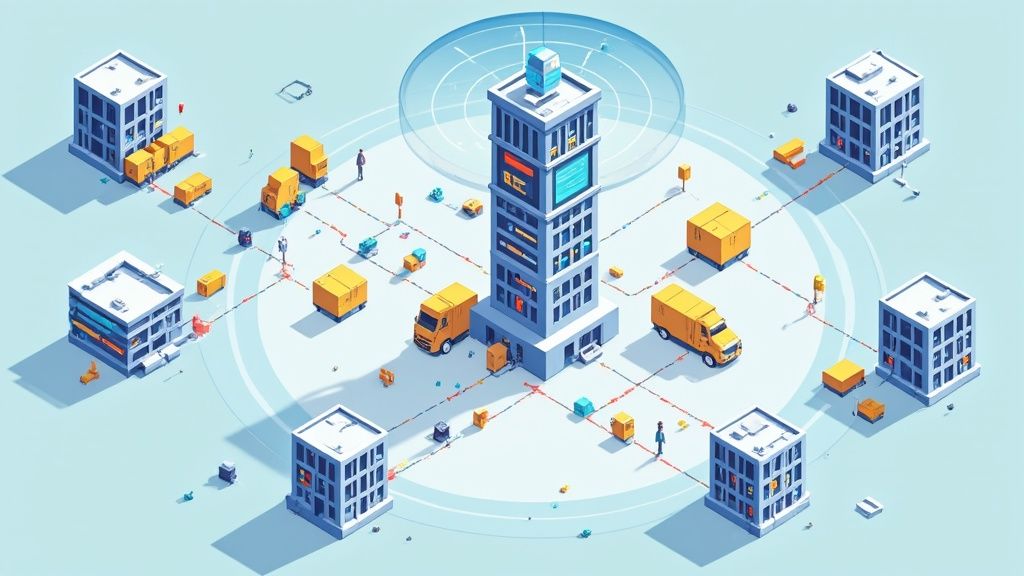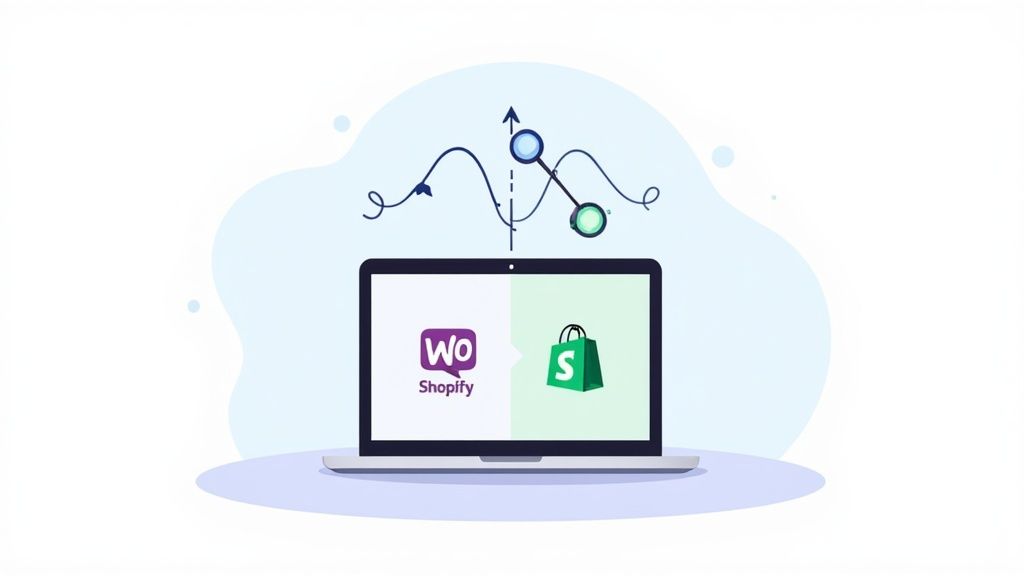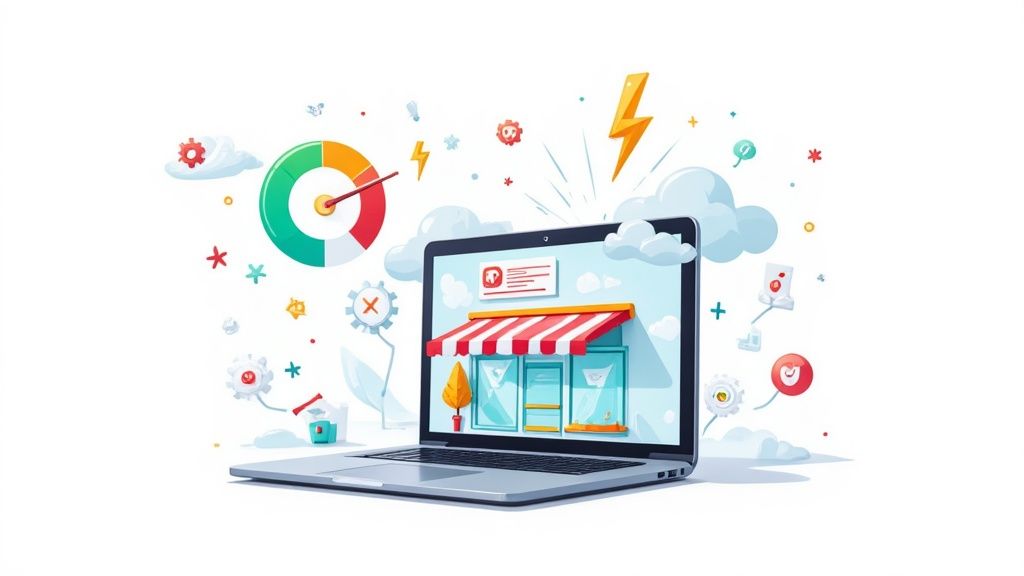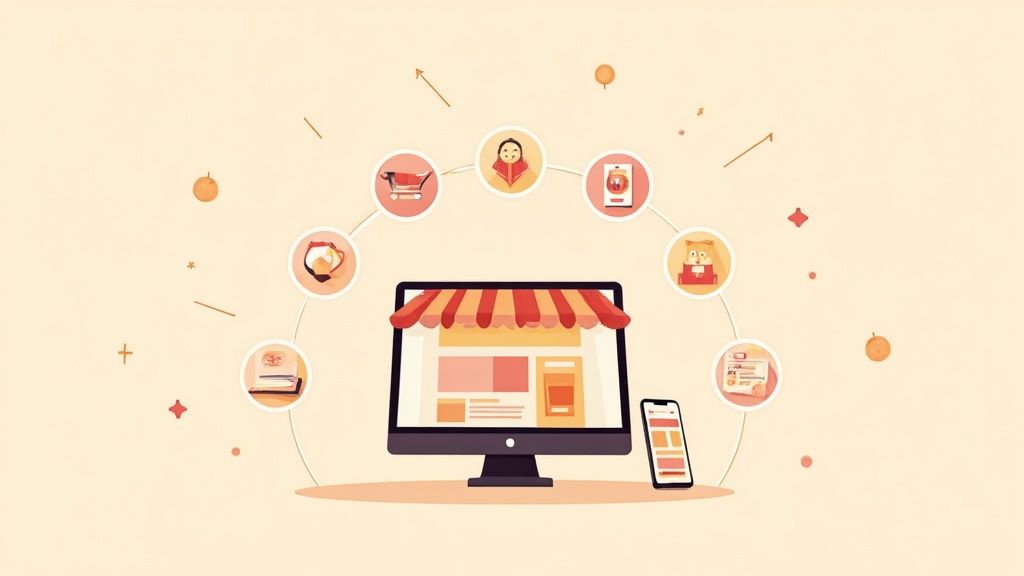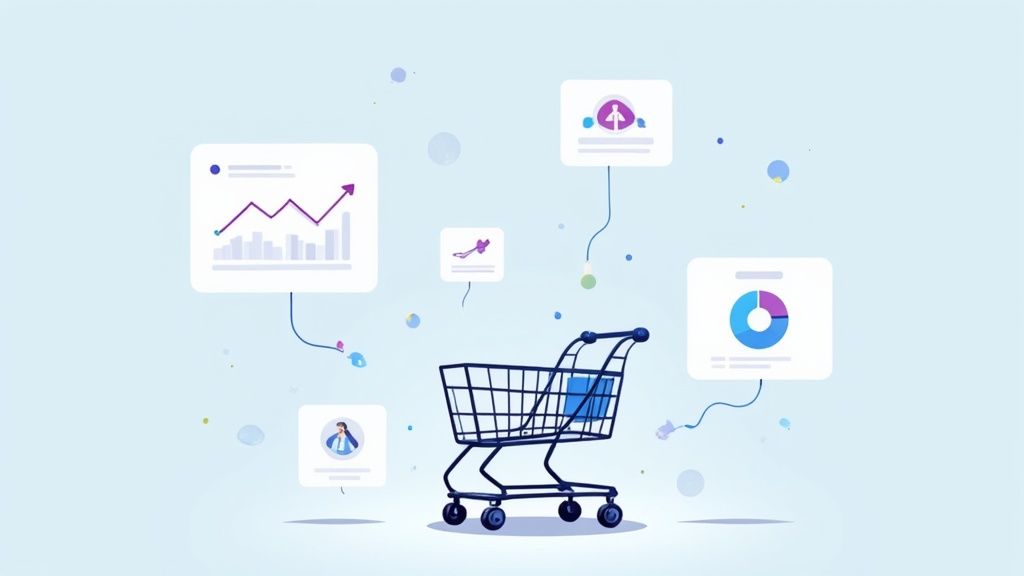
Are you a building eCommerce business or making the transition to the new norm of online-first selling?
Don't get lost in a sea of new terminology - read a glossary with 100 key definitions and detailed explanations for eCommerce Managers created by ECORN.
We prepared the Ultimate A-Z CheatSheet for eCommerce Managers
A - I
1. A/B test
An A/B test is the act of showing two different versions of the same web page, product page, email subject line, or other piece of content to different audience segments to see which one performs best.
2. Above the fold
Above the fold refers to the content that’s visible on a screen without the user having to scroll. Usually, this is the top part of the page and includes a hero image, the brand name and logo, the navigation bar, and a call-to-action.
3. Active churn (aka voluntary churn)
Active churn describes the moment a customer or user chooses to end their subscription to a service or product. They are essentially actively opting out. Reasons for actively churning can range from dissatisfaction to no longer having a need for the product or service.
4. Affiliate program
An affiliate program is an arrangement where a merchant pays out a small commission to customers or influencers who direct business their way. For example, an affiliate might receive 20% commission on the sale of a product if a customer used their pre-made link to buy.
5. Attribution model
An attribution model describes a set of rules that are used to credit certain channels for generating a conversion. There are several different types of attribution model, each one assigns credit to certain touch points throughout the buying cycle that lead to a sale.
6. Average order value (AOV)
Average order value is the average amount each customer spends when they place an order with you. It’s calculated by dividing your total revenue by the number of orders.
7. Average time on site
Average time on site is the average amount of time visitors spend browsing your site. The more time they spend, the better, as this shows they’re interested in what you’re offering.
8. Average transaction value
Average transaction value refers to the average amount each customer spends in a single transaction. It can be calculated by dividing the total value of all transactions by the number of transactions that have taken place.
B
9. Below the fold
Below the fold refers to the part of a webpage a visitor has to scroll to see. Any content that appears below the hero image or main header is considered to be below the fold. Often, this is where you can expand on information for visitors who were intrigued enough to scroll.
10. Black Friday
Black Friday is the name given to the day after Thanksgiving in the US. It’s now considered one of the biggest shopping holidays of the year, since many brands run huge sales during this period.
11. Bottom line
Bottom line refers to a merchant's income after all expenses have been taken into consideration and deducted from overall revenue. You might also have seen it referred to as net earnings or net profit.
12. Bounce rate
Bounce rate is the percentage of website visitors who leave a page without taking any action, such as filling out a form, navigating to a new page, or clicking a link. It is usually figured out by dividing single-page sessions on-site by the total number of sessions.
13. Brick-and-mortar
Brick-and-mortar refers to traditional stores that sell products in-person. Many brands today have both brick-and-mortar stores as well as online stores, giving consumers the chance to choose which they prefer.
14. Bundling
Bundling is the act of grouping together similar or related products and selling them at a reduced price. This introduces customers to new products and makes products more appealing because they come with added value.
C
15. CAC:LTV ratio
The CAC:LTV ratio (or the Customer Acquisition Cost to Customer Lifetime Value ratio) measures the connection between the lifetime value of a customer and how much it cost to acquire that customer in the first place.
16. Call to action (CTA)
A call to action is a link, button, or piece of copy that encourages a web visitor to take action. It includes demands like “buy now” or “click here” in an attempt to direct customers to the next step of the sales funnel.
17. Cart abandonment
Cart abandonment refers to the process of customers leaving products in their cart. Many shoppers add items to their cart, but subsequently don’t actually purchase. In fact, the rate of cart abandonment in eCommerce is very high - at around 60-70% - leaving merchants with the challenge of enticing customers back.
18. Chargebacks
Chargebacks are when money is returned to the consumer after a transaction - particularly if they paid using a credit card. Large amounts of chargebacks can be detrimental to a merchant’s bottom line.
19. Checkout
The checkout is the point where a consumer pays for their online goods. It requires them to choose a payment method, enter their details, and confirm their purchase.
20. Click through rate
Click through rate describes the percentage of total website visitors or users who click on a specific link. The more people that click through, the higher the click through rate. You will most often see this term used in relation to online ad campaigns.
21. Cohort analysis
Cohort analysis is the process of breaking down certain behaviours into data groups before running analysis on it. Most cohorts will share common characteristics or similarities that make it easy to compare the data. This type of analysis is often done to evaluate a merchant’s retention over time.
22. Content management system (CMS)
Content management systems are software that manages the creation and publication of digital content - whether it’s website content, blog posts, product photos, or descriptions. Popular examples include WordPress and Magento, but popular eCommerce platforms like Shopify also have a CMS element to them.
23. Conversion funnel
Conversion funnel describes the journey a consumer takes with a brand before they make a purchase. For example, they might find your brand through Google, read a couple of your blog posts, and browse a few product categories before converting to a sale.
24. Conversion rate
Conversion rate refers to the percentage of website visitors that complete a desired goal out of the total number of visitors. This might be signing up to your newsletter, buying a product, or contacting your team.
25. Conversion rate optimization (CRO)
Conversion rate optimization is the act of improving the number of conversions you get by implementing different tactics. These might include altering the design of the page, adding a CTA, or switching up the copy and visuals.
26. Cookies
Cookies are tiny bits of data that are created by a web server when a visitor is browsing your site. They collect key information about the user, such as their location and browsing behaviour, which you can analyse and use to inform future decisions around your store.
27. Cost of Goods Sold
Cost of goods sold (COGS) is the total cost of a product to the seller, including manufacturing costs. You can work out your store’s gross profit by detracting the COGS from your total sales revenue.
28. Cross-sell
Cross-selling is the act of promoting similar or relevant products to a buyer who has expressed an interest in a particular item.
29. Customer acquisition cost (CAC)
Customer acquisition cost is the average total cost of getting a new customer. When you understand this, you can gauge how much you’re spending on acquiring every new customer.
30. Customer experience (CX)
The customer experience is essentially the experience a customer has with your brand. It encompasses every touch point a potential buyer has with your store and how they feel when they interact with that touch point.
31. Customer journey
Customer journey is the path a shopper takes to become a customer. The journey varies for every individual customer, but the end result is to get them to the checkout.
32. Customer relationship management (CRM)
Customer relationship management is the system you use to manage interactions with your customers. It usually involves analysing data and studying and storing large amounts of customer information.
33. Cyber Monday
Cyber Monday is one of the biggest online shopping days in the calendar. It takes place on the Monday after Thanksgiving in the US and sees many brands offering cut-price deals and offers to entice shoppers.
D
34. Direct mail
Direct mail (a.k.a. snail mail) is a traditional marketing method that sees brands physically posting advertising materials to a consumer’s home address.
35. Direct-to-consumer (DTC)
Direct-to-consumer is a business model where merchants sell directly to customers without the help of any third-party retailers, wholesalers, or marketplaces.
36. Domain
A domain (or a domain name) is the location of a website. It’s the address or URL that people type into their search bar to find a specific website.
37. Drop shipping
Drop shipping is an online retail model where merchants don’t physically store the products they keep in stock. Instead, they ship products on-demand from central warehouses or through a third-party distributor.
38. Discount code
A discount code is a coupon or ticket that shoppers can use to get money off a product. They are usually redeemed at checkout, and can be created for specific consumers or for larger groups of shoppers.
E
39. Email marketing
Email marketing is the act of messaging your customers or audience via email. Landing directly in their inboxes is a great way to establish a connection and get your products in front of their eyes.
F
40. Fulfilment
Fulfillment is the process of storing inventory, picking and packing purchased products then shipping orders to customers. Many brands contract specialised fulfillment centres to carry out this work.
G
41. Gamification
Gamification is using elements you might find in game playing (like point scoring and rewards) in online marketing to encourage consumers to engage with your product or service.
42. GDPR
GDPR is a regulation in EU law on data protection and privacy. It addresses the storage and transfer of personal data outside the EU and EEA areas and has strict rules businesses must follow if they’re collecting data in those areas.
43. Google AdWords
Google adwords is an ad campaign platform that lets you create and serve advertisements, product listings, and videos to people browsing Google. Ads can be placed in the search engine results and on relevant websites in Google’s network.
44. Google Analytics
Google Analytics is one of the most popular ways to track and measure your website traffic. It gives insights into the demographics of your audience, what actions they take, and your best performing content.
45. Google keywords
Keywords are relevant words and phrases your customers use to search for products, queries, and services. Google uses these keywords to determine how relevant your web pages are.
H
46. Headless
Headless eCommerce is the term used to describe a relatively recent eCommerce architecture where the front-end is decoupled from the back-end. This means you can update, edit, and tweak the back-end without anything happening at the front.
I
47. Interactive product visualization
Interactive product visualization is when a merchant uses 3D renderings, images, and artwork to illustrate a product that consumers can interact with online.
48. Inventory
Inventory (also known as stock) describes the products and items a business has available to sell to customers.
K - O
K
49. Keyword ranking
Keyword ranking refers to where your web page ranks in search engine results for a specific keyword. For example, if your URL is third in the search results for the term “red ballet shoes”, that’s your keyword ranking.
L
50. Landing page
A landing page is a page on your site created specifically with a single goal in mind. Often, landing pages are used to funnel traffic from ad campaigns, but they can also be used to promote sales, deals, and new products.
51. Lifetime value (LTV)
Lifetime value is the amount of value (or money) a customer will bring your brand during the total period they’re buying from you. The easiest way to calculate it is to multiply your average order total by the average number of purchases a customer makes in a year. Finally, multiply that by the average amount of years a customer stays with you.
52. Loyalty program
A loyalty program is a marketing strategy brands can use to encourage customers to keep coming back. Usually, they involve giving out rewards or discounts to returning customers.
M
53. Marketing automation
Marketing automation is the act of using software and technology to automate your marketing activities. Automating previously manual tasks makes it far easier to effectively market on multiple different channels and saves time and resources.
54. Mega menu
Mega menu is the term used to describe a website menu that can be expanded to display many different options. They are great if you need to accommodate a lot of options and web pages, and for allowing customers to deep dive into your site.
55. Mix effect
Mix effect measures the impact in the revenue generated from sales when there has been a change in the mix of the quantities sold.
N
56. Nurturing flow
A nurturing flow refers to a targeted email or SMS sequence that aims to warm up leads until they’re ready to purchase. It can involve sending out relevant content, product recommendations, or simple brand updates to keep you front of mind.
O
57. Omnichannel
Omnichannel retail implements tactics across multiple different channels to reach customers that are hanging out in different places. The aim is to provide a seamless customer experience regardless of the platform or device a customer is using.
58. Onsite FOMO (aka scarcity)
Onsite FOMO is the act of creating the “fear of missing out” by running limited time offers or having only a certain number of products available onsite.
59. Organic traffic
Organic traffic refers to the traffic that arrives on your website through search engines or other unpaid methods, like social media.
60. Out of stock rate (OOS)
The out of stock rate is the percentage of times an item is not available when a customer is ready to buy it. The lower the OOS rate, the better - obviously you want customers to be able to buy a product as soon as they’re ready.
P - T
P
61. Page rank
Page rank is Google’s way of ranking pages in their search results. It measures the importance of a web page based on their age, content, and the number of quality backlinks they have.
62. Passive churn (aka involuntary churn)
Passive churn describes the moment a customer leaves a subscription without consciously choosing too. Instead, they are removed for reasons like their credit card expired, their payment failed, or their information changed.
63. Path length
Path length is the average length of your online sales cycle - that is, the amount of time it takes for a consumer to become a customer. Each touch point in the path is considered another “step” in the path.
64. Payback window
Payback window (or payback period) is the rate at which a revenue from an online marketing campaign returns the capital expended to acquire new customers from it.
65. Payment gateway
A payment gateway is a service that authorizes credit card or other kinds of transactions online. Often, it will be hosted by a third-party and added to your checkout to make it easy for customers to pay via different methods.
66. Pay-per-click
Pay-per-click (PPC) is an online advertising method in which businesses pay each time someone clicks on their ads.
67. Pop-up
A pop-up is a window that appears on a web page to encourage visitors to take action. It might ask them to sign up for a newsletter, claim a discount, or download an ebook.
68. Point of sale (POS)
The point of sale is the time and place a transaction took place. When taking place online, customers will be able to see the cost of their purchase, choose a payment method, and get an emailed invoice regarding their purchase.
69. Product filters
Product filters apply attributes to products so that they are easily searchable. They allow customers to refine their searches based on things like price, color, size, and the number of reviews.
70. Product drop
A product drop is when a brand launches a limited edition product or new product line for the first time. It’s a great way to appeal to competitive customers and build brand awareness through exclusivity.
71. Product discovery
Product discovery is a process merchants use to make sure the products they’re building and releasing are right for their audience. It works by reducing uncertainty around a problem or idea and giving merchants confidence in their product choices.
72. Profit margin
Profit margin refers to the ratio of a company’s profits divided by its revenue. It compares profit to sales and shows merchants if there is room for improvement.
73. Push notification
Push notifications are pop-up messages that you can serve to visitor’s browsers regardless of the device they’re using. They can be used to promote new product lines, offer a discount, or direct shoppers to a specific page.
Q
74. QR code
A QR code is a machine-readable barcode that directs those who scan it to a designated web page or further information.
R
75. Repeat purchase rate (aka reorder rate)
Repeat purchase rate measures the percentage of customers who come back and make another purchase from you. It’s also known as a reorder rate and sometimes the customer retention rate. The higher your repeat purchase rate, the better, because this means more customers are coming back and buying again.
76. Retargeting
Retargeting is a paid marketing tactic that uses cookies to serve ads to consumers who have visited certain pages on your website. Retargeting is predominantly used to remind customers about products they showed an interest in and to keep brands front of mind.
77. Retention
Retention describes the loyalty your customers have to your store, and how often they return to purchase products. The more orders customers place over time, the better your retention is. It’s in most merchants’ interests to keep their retention rates high, as this generally leads to a more engaged customer base and higher LTV.
78. Responsive design
Responsive design is a design philosophy that provides a customized viewing experience depending on the user’s browser platforms. Responsible web pages dynamically alter their appearance based on factors like the visitor’s screen size and orientation.
79. Review
A review is a testimonial from a past customer that outlines their experience with your product or brand. They are a form of social proof and can be displayed at various points throughout the sales cycle to boost shopper confidence and increase conversions.
S
80. Search engine optimization (SEO)
Search engine optimization is the act of improving your website to increase its visibility in search results. It targets unpaid traffic through keyword implementation, generating backlinks, and other key factors that make up Google’s algorithm.
81. Search engine results page (SERP)
The search engine results page is exactly that - the page you see when you type a search term into Google. Results are usually shown in order of relevance and popularity based on Google’s complex algorithm.
82. Shipping
Shipping is the act of delivering a product from the warehouse or wherever it’s being stored to the customer’s address.
83. Sitemap
A sitemap is essentially a blueprint of your website that maps out how the pages are connected to each other. It helps search engines like Google find, crawl, and index all of the content on your site.
84. Shopping cart
A shopping cart keeps track of how many items a customer has selected to buy. The cart can then be taken to checkout, where the customer can pay for and receive their goods.
85. SMS marketing
SMS marketing is a marketing tactic where merchants reach out to their customers via text message. It can be a great way to monetize your audience through improved conversion and retention.
86. Social proof
Social proof is a psychological tactic that merchants can use to instill confidence in potential customers. It usually comes in the form of reviews, testimonials, and user generated content, and can help push shoppers through the sales cycle.
87. Stock keeping unit
A stock keeping unit (SKU) is the identification code for a product. It usually takes the form of a machine-readable barcode. Merchants can use their own SKUs to catalog their products or, if they are using a third-party platform, they will be generated for them.
88. Subscription model
A subscription model is when a customer pays monthly, quarterly, or yearly to access a product or service.
T
89. TCPA
The Telephone Consumer Protection Act is a law that regulates how businesses can solicit their products and services over the phone in the US.
90. Tech stack
Tech stack refers to the suite of tools and technology you use to run your business. It can include your marketing tools, communication tools, CRM, and any other digital tools that are important to the running of your business.
91. Time lag
Time lag refers to the number of days that pass between when a customer first sees an ad to the time they convert.
U - Z
U
92. Unboxing experience
The unboxing experience describes the moment when a customer unpacks their product. The aim is to create a memorable unboxing experience to surprise and delight customers so that they come back for more.
93. User experience (UX)
The user experience is the overall experience a consumer has while browsing your website. It covers how easy a website is to navigate, how pleasing it is to use, and how quickly consumers can find what they want.
94. User interface (UI)
A user interface is the space where interactions between people and machines take place. The term can be used to describe both input devices, like keyboards and trackpads, as well as output devices, like printers and speakers.
95. Upsell
Upselling is the act of promoting a better, more expensive product to a customer by ‘upgrading’ their purchase. For example, if a customer shows interest in the iPhone 7, Apple might try and upsell them to the iPhone 8 or higher.
V
96. Value proposition
Your value proposition is the reason why customers should buy your product over a competitor’s. It’s also what differentiates your brand or products from others in the market.
W
97. Welcome flow
A welcome flow is an automated series of emails that new subscribers receive when they give you their email address. It gives them an introduction to your brand and nurtures shoppers who might not be ready to buy just yet.
98. Wholesale
Wholesale is the act of selling large quantities of products at low prices, usually with the purpose of selling them on by retailers at a profit.
99. Win back
Win back is the act of winning back customers that churned or went elsewhere. There are numerous ‘win-back’ strategies you can use to re-engage prospects, including retargeting campaigns and abandoned cart emails.
X
100. XML Sitemap
An XML sitemap lists out all the important pages on your website to make it easy for Google to find and crawl.
Thanks for attention !
ECORN Agency can help you with design, development or management of eCommerce business. We assist you to build eCom unicorns! Book free consultation with us!









